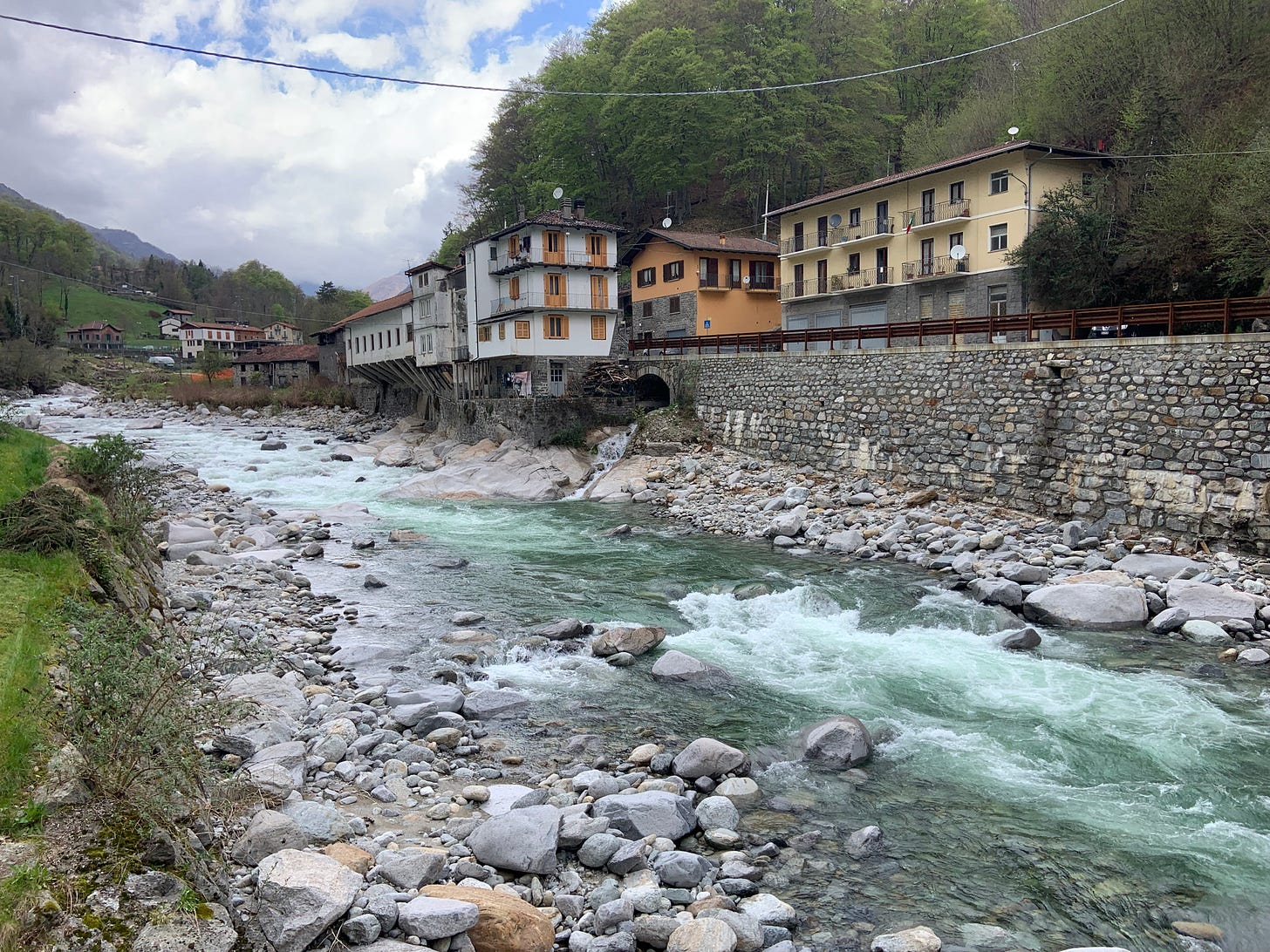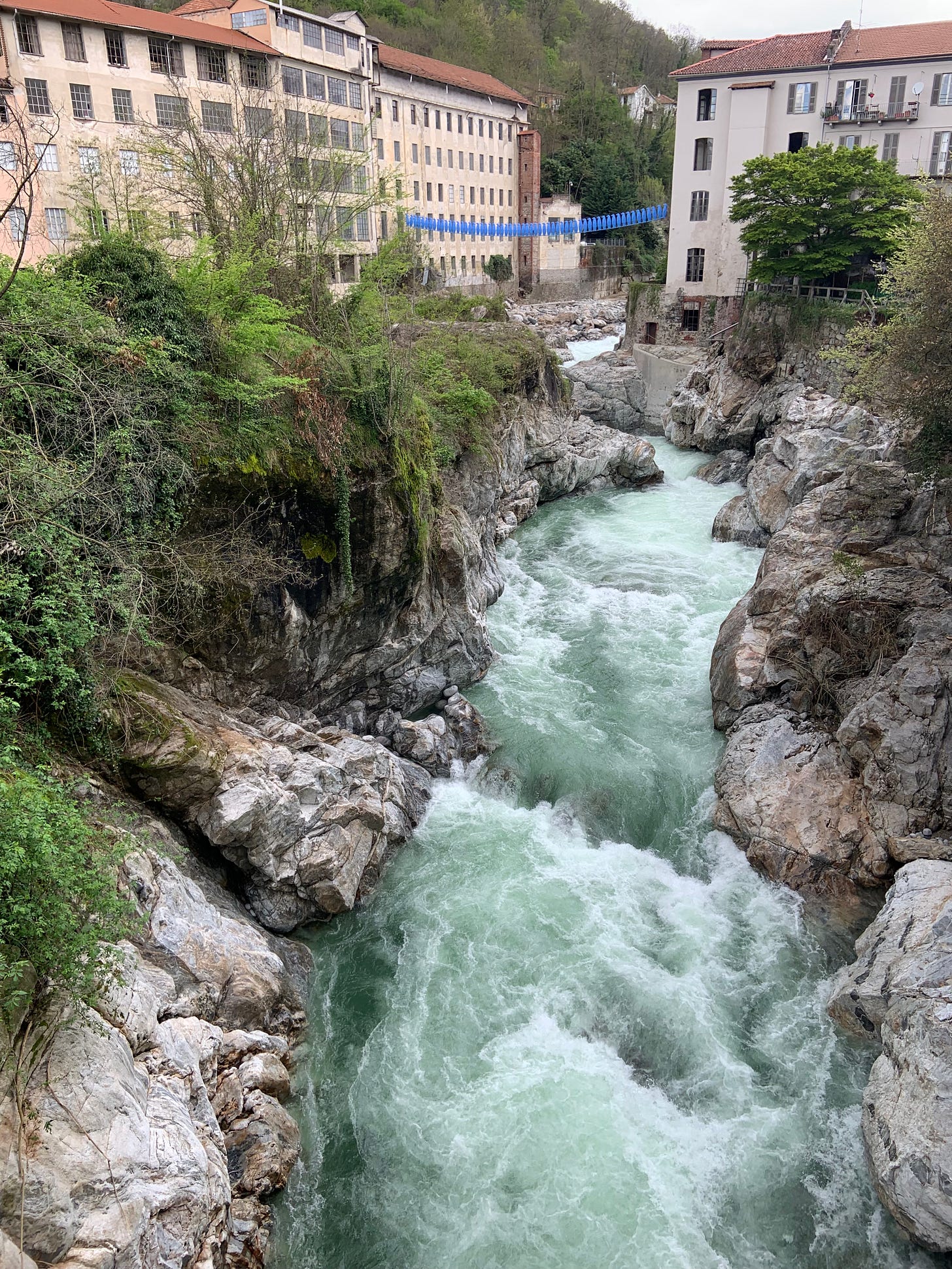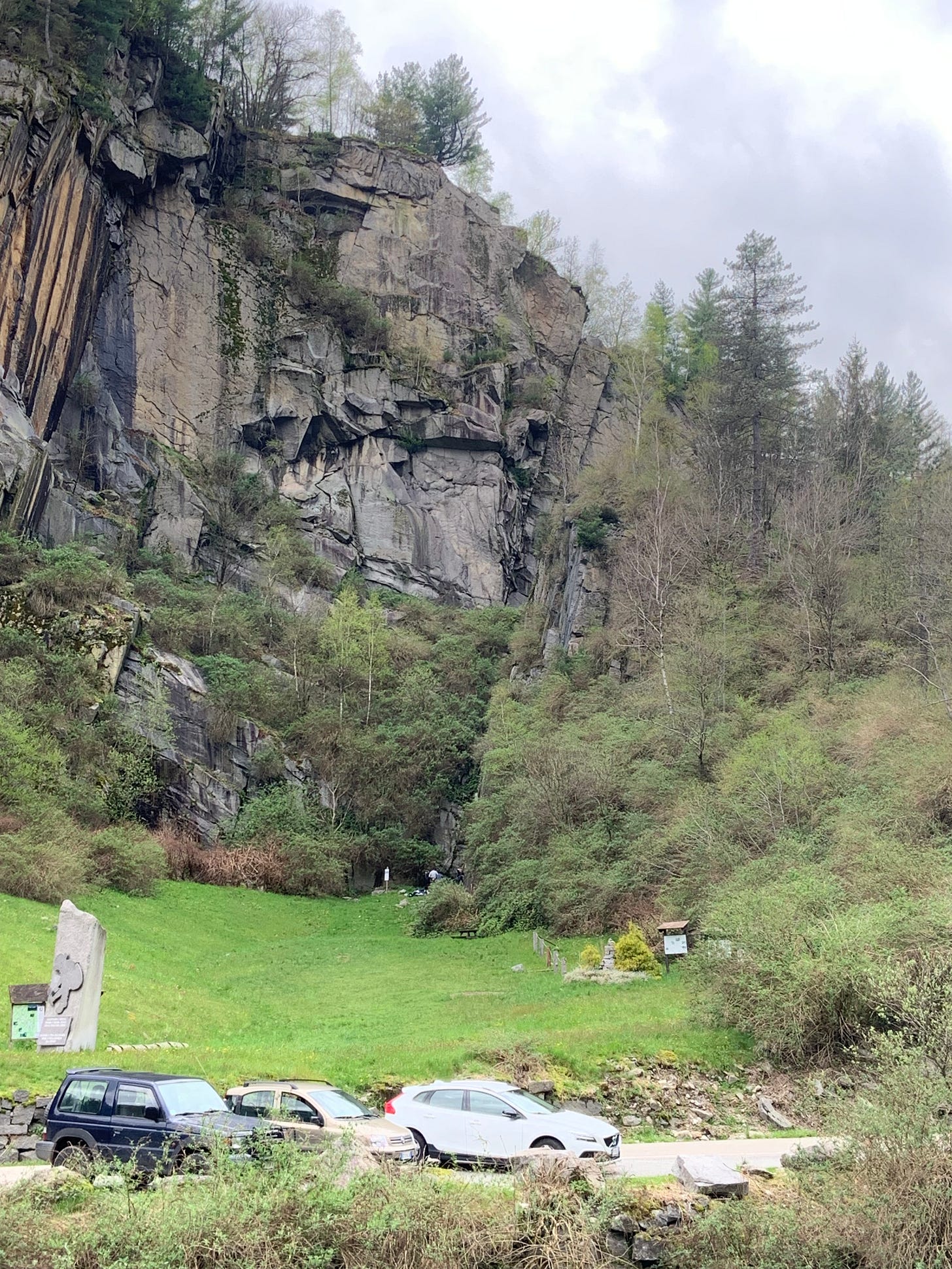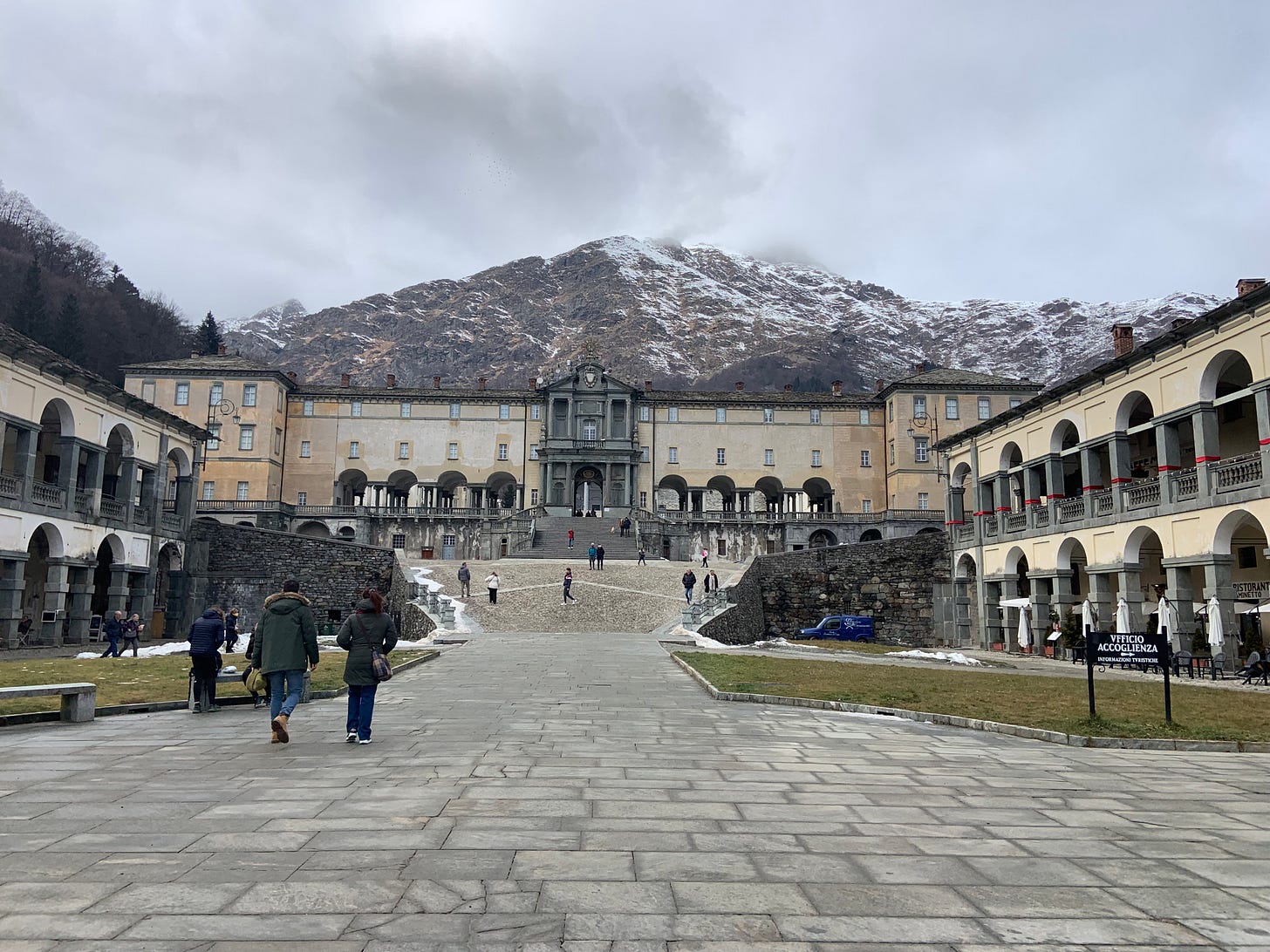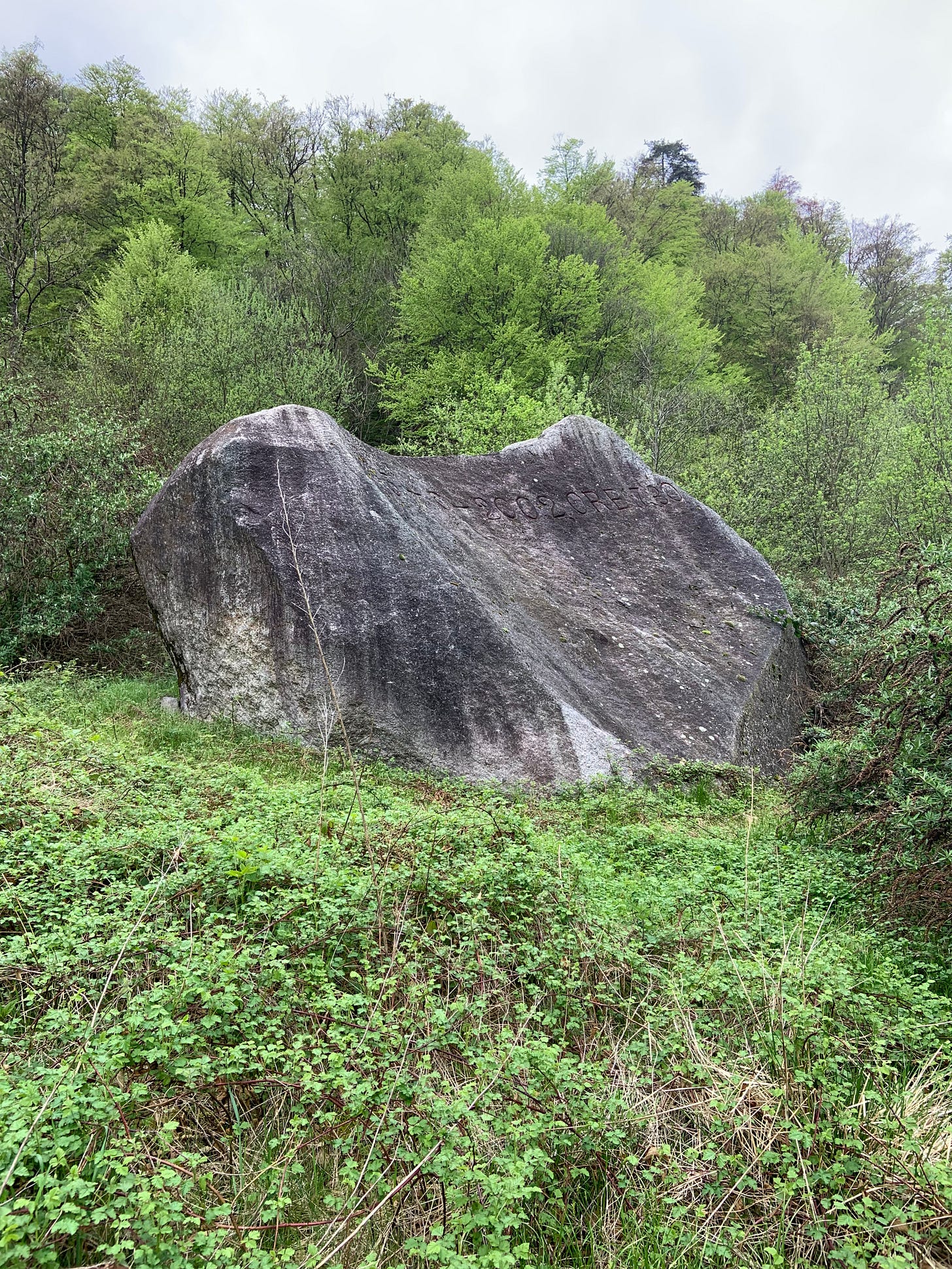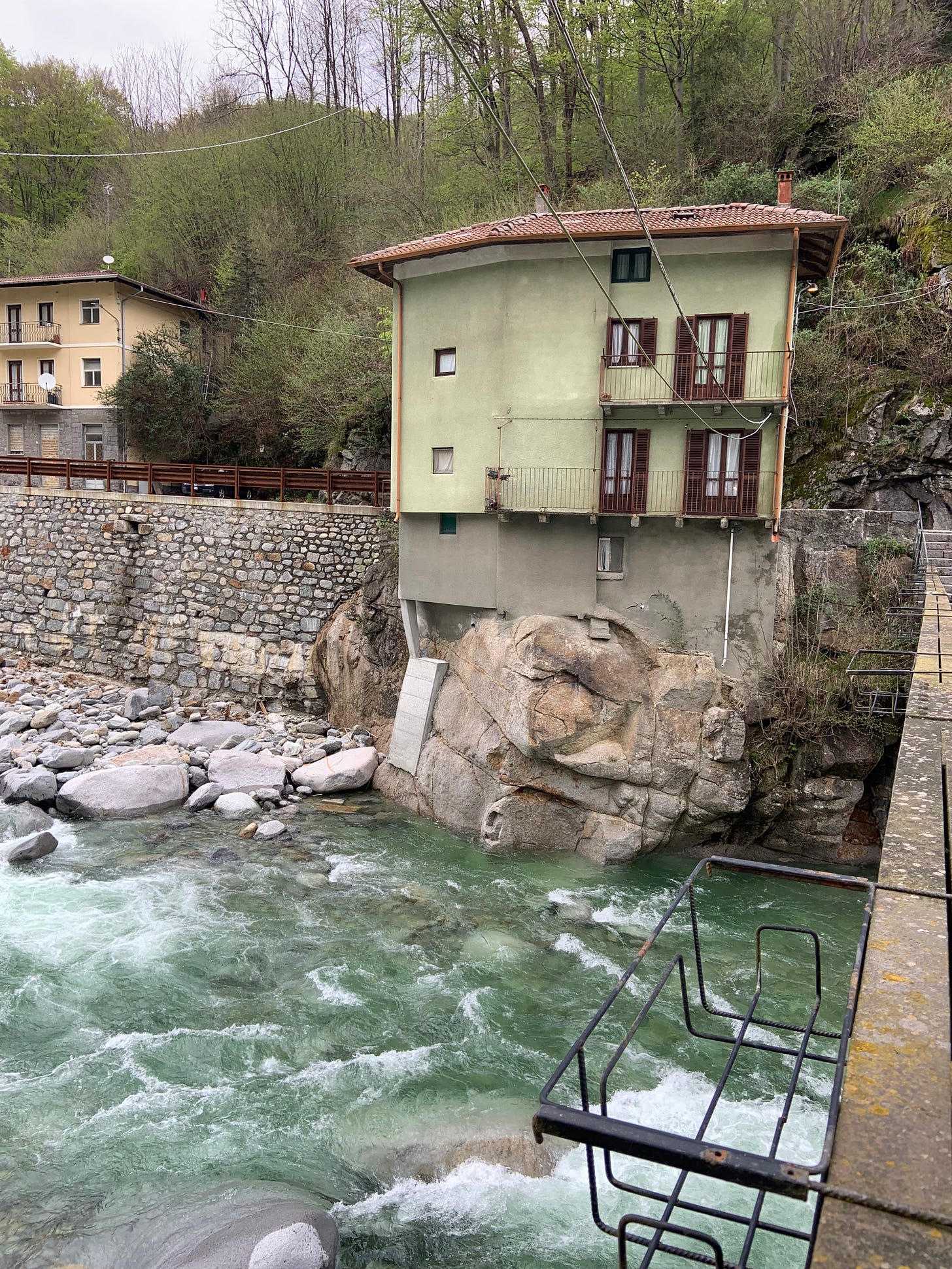The Lifeblood and Fury of Nature
Mountain Rivers in the Biella region are the main arteries of human history, from the dawn of time to today, even though we are much more advanced than people in antiquity.
The mountain rivers of Piedmont are more than just waterways—they are the lifeblood of the region. They have shaped its history, fueled its industries, and sustained its people. Yet, these same rivers can also unleash devastating floods, reminding everyone of nature's untamable power.
Water is life, and in Piedmont, this truth runs deep. The rivers cascading from the Alps—such as the Cervo, the Elvo, and the Sesia—have been vital for centuries. Their crystal-clear waters provided drinking water, irrigated fields, and powered mills. But their most significant legacy lies in the industries they nourished.
The Textile Heart of Biella
Biella, nestled at the foot of the Alps, owes its industrial rise to these rivers. The fast-flowing currents provided the perfect energy source for textile mills, which became the backbone of the local economy. Wool washing, spinning, and weaving flourished along the riverbanks, turning Biella into one of Italy’s most important textile hubs. The water’s purity was essential—only the cleanest streams could produce the finest wool fabrics, earning Biella a global reputation for quality.
The first factory was built by the mountain people, who had to go down into the valley to put the plant near the river. Every day, the villagers had to walk a few kilometers down through the woods. Today, there is a city there, with roads and cars that make life easier, but at the time, people walked up and down on foot. They left a few hours earlier to work in their vegetable gardens, which were created not far from the “Strada del Lavoro” (the road of work). What seems more difficult to me is that, after hours of work, they had to climb back up that rock to return home. Those people were made of iron.
The Stonecutters of Balma
But textiles were not the only industry born from these waters. In Balma, near Biella, the rivers played a different role. The rugged terrain hid a treasure: syenite, a hard volcanic rock ideal for construction. Stonecutters extracted and shaped it, using river water to cool their tools and transport heavy blocks. The rivers were their silent partners, helping carve out a livelihood from the mountains.
The syenite quarried in Balma, near Biella, is a remarkable volcanic rock known for its durability and striking gray-pink hue. This hard, resistant stone has been prized for centuries, used in construction and sculpture across Piedmont and beyond.
One of the most famous structures built with Balma syenite is the Santuario di Oropa, a monumental Marian sanctuary nestled in the Biella Alps. The stone’s strength and elegance can be seen in its columns, facades, and decorative elements. Additionally, syenite was used in the Lanterne dei Morti (Lanterns of the Dead) in the Oropa sacred mountain, ancient funerary monuments that stand as silent witnesses to the region’s history.
Beyond religious architecture, syenite was also used in noble palaces, bridges, and cobblestones, proving its versatility. Even today, this stone remains a symbol of Biella’s geological heritage—a testament to how the earth’s bones were carved into enduring works of art and engineering.
The Cervo Valley itself is carved from syenite, an extraordinary volcanic rock known as the hardest granite in the world. Its exceptional hardness comes from a unique geological process—as it rose from the Earth’s depths, it lost its quartz content, resulting in an incredibly dense and durable stone. This makes syenite extremely rare, found only in a few places worldwide: the Black Forest and Saxony in Germany, the Oslo region of Norway, and the Adirondack Mountains in New York, USA.
A Stone of Legends and Landmarks
Syenite from the Cervo Valley is so prized that legend claims it was used in the base of the Statue of Liberty, supporting the iconic monument in New York Harbor. While historical records don’t confirm this, the story speaks to the stone’s reputation for strength and prestige.
Closer to home, syenite has left its mark on Turin’s grand architecture:
Streets & Squares: The pavements of Via Po, Via Pietro Micca, and other historic streets are laid with syenite, enduring centuries of footsteps.
Religious Architecture: The external staircase of Turin’s Cathedral (Duomo) showcases syenite’s elegance.
Porta Nuova Station: The pillars and pilasters of this iconic railway station are clad in syenite, a testament to its beauty and resilience.
From sacred sites like the Santuario di Oropa to urban masterpieces in Turin, syenite has been the silent backbone of Piedmont’s most enduring structures. Rare, unyielding, and steeped in legend, it remains a geological treasure—proof that the mountains of Biella hold more than just water and wool, but the very stone that built history.
The Dark Side: Floods and Destruction
Yet, for all their gifts, the rivers of Piedmont can also bring catastrophe. When heavy rains swell the mountain streams, they transform into raging torrents, sweeping away everything in their path.
I once happened to hike there after a night when the river had become a killer. I talked to people who were still scared by the sounds of falling rocks.
The 2002 Flood: A Nightmare Remembered
One of the worst disasters in recent memory was the flood of 2002. Torrential rains in late October turned rivers into monsters. The Cervo and Sesia burst their banks, submerging towns, destroying bridges, and cutting off entire communities. Roads became rivers, fields turned into lakes, and homes were swallowed by mud.
In Biella and the surrounding valleys, the damage was immense. Factories were flooded, machinery ruined, and livelihoods washed away in hours. The floodwaters carried debris, rocks, and uprooted trees, leaving behind a wasteland. Recovery took years, and the trauma remains fresh in the memories of those who lived through it.
A Delicate Balance
The rivers of Piedmont are both givers and takers. They sustain life, drive industry, and shape the land—but they also demand respect. Modern engineering has tamed them somewhat, with dams and flood barriers, but nature always has the last word.
For the people of Piedmont, the rivers are more than water—they are history, identity, and survival. They are the reason Biella became an industrial powerhouse, the force that carved valleys and fed farms. But they are also a reminder of human fragility in the face of nature’s might.
In the end, the mountain rivers of Piedmont are a testament to life itself: beautiful, essential, and sometimes, terrifyingly powerful.
ARE YOU INTERESTED IN OTHER STORIES?
You can find my books here: https://bit.ly/MysteryinLife




